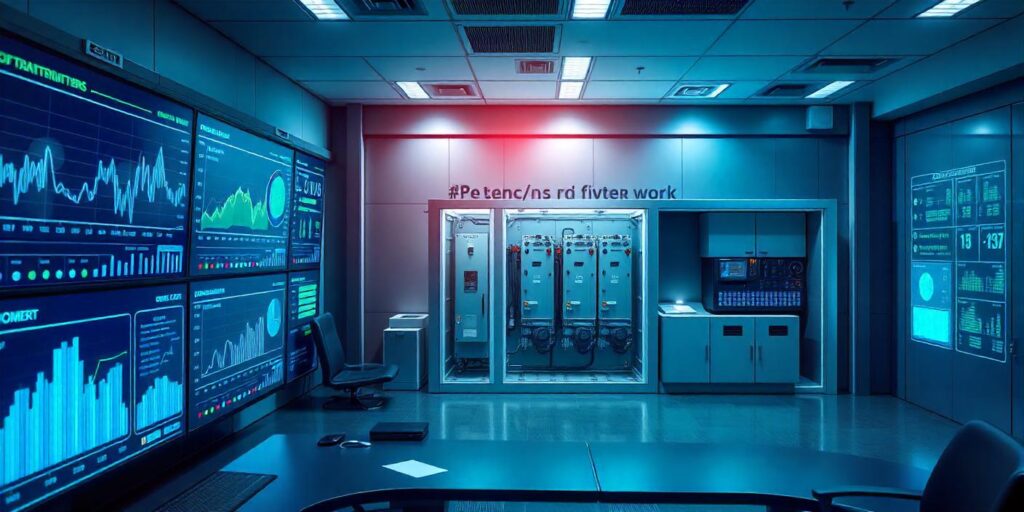Introduction:
In today’s fast-paced industrial landscape, the fourth industrial revolution, also known as Industry 4.0, is reshaping how manufacturing and power distribution are managed. Smart technologies, the Internet of Things (IoT), and advanced automation are now at the forefront, enabling more efficient, reliable, and intelligent systems. At the heart of this transformation is smart power distribution, made possible by real-time monitoring and control, a critical feature of Modular Switch Rooms (MSRs).
Modular Switch Rooms, prefabricated structures designed to house essential electrical and power distribution systems, are playing a pivotal role in optimizing industrial power management. They not only provide flexibility in installation and scalability but also integrate cutting-edge technologies that allow for real-time data analysis and automated controls. This capability has become essential in industries where power reliability, safety, and efficiency are non-negotiable.
In this blog, we will explore how smart power distribution through real-time monitoring and control within Modular Switch Rooms is revolutionizing industries and paving the way for a smarter, more sustainable future.
The Concept of Smart Power Distribution
Smart power distribution refers to the automation and optimization of power systems using IoT-enabled devices, sensors, and real-time data analytics. Traditional power distribution systems often relied on manual interventions and scheduled maintenance, making them susceptible to inefficiencies, delays in detecting faults, and energy wastage. However, with the advent of smart technologies, power distribution can now be closely monitored and managed remotely, enhancing both operational efficiency and system reliability.
Modular Switch Rooms, equipped with advanced switchgear and control systems, have embraced this shift toward smart power distribution. These modular systems feature:
- Real-time Monitoring: Sensors and IoT devices constantly collect data on various parameters, such as voltage, current, temperature, and power quality, providing a comprehensive view of the system’s health.
- Automated Controls: These systems enable automatic responses to fluctuations in power demand or supply, ensuring stability without human intervention.
- Data Analytics: The data collected through real-time monitoring is processed and analyzed to identify trends, predict potential failures, and optimize system performance.
By integrating these capabilities, Modular Switch Rooms allow industries to maintain seamless power distribution while minimizing risks and reducing operational costs.
Real-Time Monitoring: A Game Changer for Power Distribution
Real-time monitoring is one of the most significant advancements brought by Industry 4.0 technologies in the field of power distribution. In Modular Switch Rooms, it involves continuous data collection from various sensors embedded within the system. This data can be remotely accessed through cloud-based platforms, allowing operators to monitor the performance of the entire power distribution system from any location.
The benefits of real-time monitoring include:
- Early Detection of Issues: By monitoring parameters such as load, temperature, and voltage in real time, any deviations from normal conditions can be detected early. This allows for quick corrective actions before minor issues escalate into major failures.
- Optimized Power Usage: Real-time monitoring provides insights into power consumption patterns, helping industries identify areas where energy can be conserved. This contributes to reduced energy costs and lower environmental impact.
- Improved Reliability: Continuous monitoring ensures that any malfunction, like power surges or voltage fluctuations, is identified immediately, minimizing downtime and enhancing system reliability.
- Enhanced Safety: With real-time data, operators can detect hazardous conditions such as overheating or overloading and initiate preventive measures, thus ensuring the safety of personnel and equipment.
In essence, real-time monitoring transforms power distribution from a reactive process into a proactive one, where potential issues are addressed before they become problematic.
Real-Time Control: Precision and Efficiency
While monitoring is critical, the real power of smart distribution systems comes from real-time control. Modular Switch Rooms incorporate intelligent control systems that not only monitor the system but also make instant decisions to optimize performance. These control systems automatically adjust the power flow based on the data they receive, ensuring that power distribution remains efficient and balanced at all times.
Some key advantages of real-time control in Modular Switch Rooms include:
- Load Balancing: Real-time control systems can dynamically adjust the distribution of power across different loads, preventing any single load from being overburdened. This enhances the efficiency of the system and prolongs the life of electrical components.
- Demand Response: In environments where power demand fluctuates, such as manufacturing plants or data centers, real-time control systems can respond instantly to changes in demand. This helps avoid energy wastage and ensures that power is distributed precisely where it is needed.
- Power Quality Management: Real-time control systems help maintain optimal power quality by regulating voltage levels, preventing power spikes, and managing harmonics. This ensures that sensitive equipment receives a stable power supply, reducing the risk of damage or malfunctions.
- Remote Adjustments: Operators can make adjustments to the system remotely, based on the data provided in real time. This eliminates the need for manual interventions and allows for swift reactions to changing conditions.
Real-time control not only improves the efficiency of power distribution but also enables industries to react faster to unforeseen changes, thereby ensuring continuous operation and reducing the likelihood of costly downtime.
The Role of IoT and Data Analytics in Enhancing Control and Monitoring
The Internet of Things (IoT) is at the core of real-time monitoring and control in Modular Switch Rooms. IoT-enabled devices and sensors collect, transmit, and analyze vast amounts of data, which can then be used to optimize power distribution in real time.
Furthermore, the data generated by these systems is analyzed using advanced algorithms to provide predictive insights. For instance, machine learning models can identify patterns that signal equipment wear or potential failures, allowing for predictive maintenance. By addressing issues before they lead to failure, industries can avoid unplanned downtime, reduce repair costs, and prolong the lifespan of critical equipment.
The combination of IoT and data analytics ensures that Modular Switch Rooms are not just responsive but also proactive, driving operational efficiency and reducing risks in power distribution systems.
Conclusion:
In conclusion, smart power distribution enabled by real-time monitoring and control is transforming industries by making power systems more reliable, efficient, and safer. Modular Switch Rooms are at the forefront of this revolution, offering industries the ability to optimize power distribution with precision and intelligence. Through continuous monitoring and automated control, these systems enhance the resilience of power infrastructures, reduce energy waste, and minimize downtime, making them indispensable in Industry 4.0 environments.
As industries increasingly adopt Modular Switch Rooms, the shift towards smarter, more efficient power distribution will continue to evolve, driving not only operational improvements but also contributing to a more sustainable and energy-efficient future.
For companies looking to stay competitive in the era of Industry 4.0, embracing smart power distribution through Modular Switch Rooms is no longer an option—it’s a necessity.







